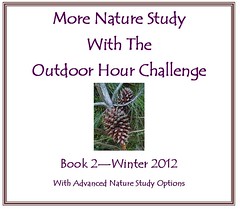
More Nature Study Book #2
Magnets and Compass
“The first ideas to learn are that the sun rises in the east and sets in the west. Just by knowing this he’ll be able to tell in which direction nearby streets and buildings are from his house or town….Have him stand so that east is towards his right where the sun rises and west is towards his left, where the sun sets. Everything straight in front of him is north, everything behind him is south.” Charlotte Mason, volume 1 page 75Inside Preparation Work:
- Read in the Handbook of Nature Study pages 776-779 (Lesson 219 on the magnet). Use a highlighter or underline sections that you would like to share with your children. Suggested magnet activities: #1, 2, 3, 5, 6, and 7.
- As a supplement to the lesson on the magnet, introduce your child to a compass. Start by teaching your child the four cardinal directions: North, East, South, and West. Show them that the compass will always point to magnetic north. Now explain that south will be in the opposite direction, east to the right, and west to the left. Suggested activities from Lesson 219: #12 and #13.
- Watch these videos: How to Hold a Compass and Bill Nye on the Earth’s Magnetism.
- Advanced suggestion: Make your own compass. You may also like to try this method outdoors: Make your own compass.
Outdoor Hour Time:
- Spend your Outdoor Hour time in your own backyard or neighborhood. Take your magnet and compass outside with you. Let your child use the magnet to find things that are magnetic in your yard. (Make sure to keep magnets away from electronics.)
- Take your compass outdoors and have your child find the four cardinal directions. Find landmarks for each direction. For example: north is the pine tree across the road from your house, south is the telephone pole on the next street, east is the neighbor’s flag pole, west is the mailbox.
- Advanced suggestion: Observe the sunset to see the exact direction it sets during the winter. Make observations over the next month, record the results, and see how the direction changes over time. Use a compass to record the exact direction in degrees. Ebook users: Use the Sunset Observation notebook page to record your results and conclusions.
- Take a few minutes to ask your child what they learned about magnets and compasses. They may be satisfied with this challenge at this point and the best way to follow up is to use the skills you learned in the days to come. Use the vocabulary you learned (magnetic, north, south, east, west) as you complete future nature study or outdoor activities.
- Your child may like to complete a notebook page recording their magnet and compass observations on notebook page or they could record their results in a nature journal. Optional: Use this Points of a Compass (Homeschool Share) activity for younger students if you wish.
- Advanced follow-up: Use your compass skills to determine the orientation of your house. Make a map of your neighborhood and include a compass rose. (You can learn more about a compass rose HERE.) Use this information in the future by recognizing wind direction as you observe the weather. Wind is named for the direction it is coming from and not where it is blowing to. (Example: North winds are blowing from the north.)
- Advanced follow-up: Map and Compass Basics-Azimuth and Navigation with a Compass.
- Advanced follow-up: Have you read about Letterboxing or Geocaching? Both of these family activities can be fun ways to get outdoors and use your compass and map reading skills.
Magnets, Compass, and Moon Names.


